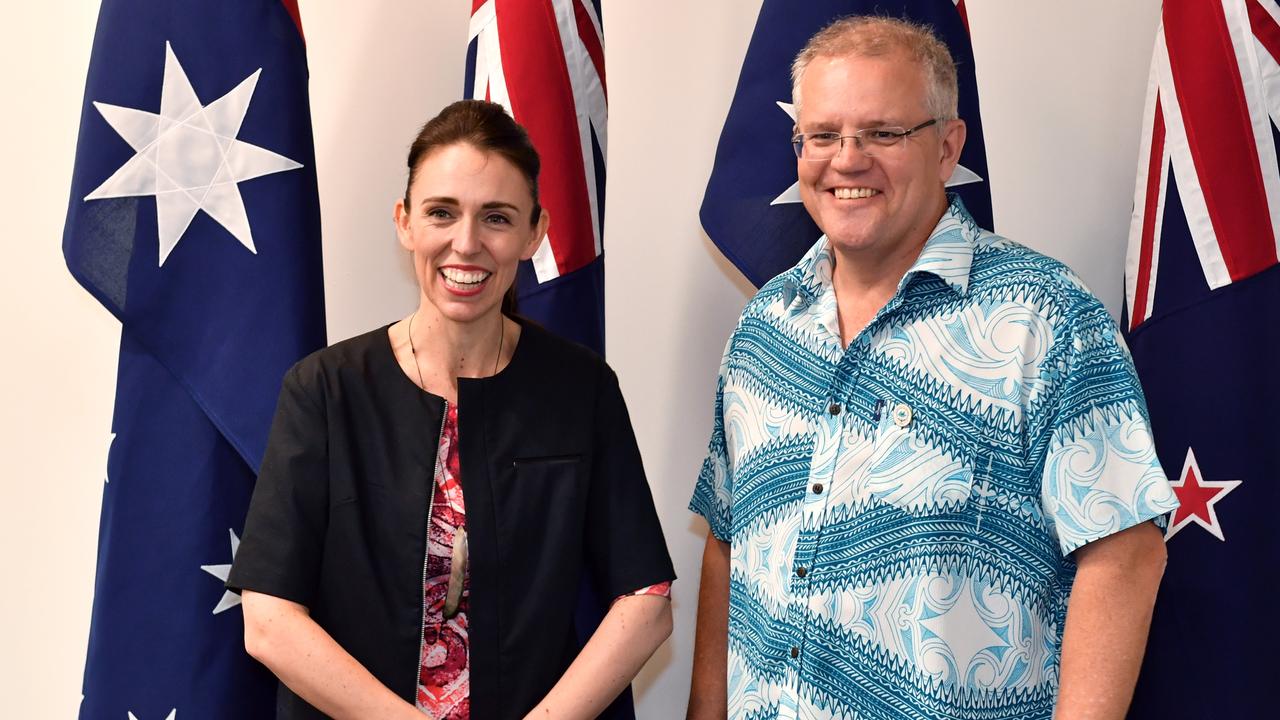Anyone can spend money they don’t have if someone is prepared to lend it to them. When governments do that the cost of the borrowing becomes a charge against future taxes. Future taxpayers have just that little bit less of their own taxes to pay for services because a component must go off to service the cost of previous consumption.
Maybe they will decide to send the cost on to the next generation and add in a little bit of their own overconsumption as well. Soon the debt and debt-servicing cost begins to accumulate. Soon future generations have less money to spend on their own needs because they are paying the cost of previous decisions.
Personal debts die with the person who incurred them. Governments do not die, and their debts continue down to successive generations. Their flexibility and their options begin to narrow.
One of the things I am proud of in my time in government is that we bequeathed no debt to future generations. And we cleared the debts of all the governments that went before it. Never had the financial position of the federal government been stronger. It was an important time to be strong, given the gyrations in the international financial system in 2008.
I doubt we will ever be in a debt-free position again. The situation today is very similar to the position 20 years ago when I started as treasurer. Like today we were facing budget deficits across the forward estimates. Spending was running well in excess of revenue.
As is well known, in 1996 we decided to balance the budget over a two-year time frame by cutting expenditure.
We did not decide to increase revenue to match spending. We decided to cut spending to match revenue. Over the next two years expenditure was cut to 23.9 per cent of gross domestic product, a reduction of 1.7 per cent of GDP, and the budget was balanced.
At the time our critics said this would lead to recession. There were grounds for fearing unemployment then because the rate was 8.4 per cent compared to 5.8 per cent today. In the short term unemployment got worse but as our strategy began to work we made major strides in reducing it.
In those days interest rates were much higher. We said that reducing the budget deficit would allow more space to reduce interest rates. This proved true.
One of the policy’s benefits was that lower interest rates undoubtedly eased pressure on family budgets and helped to stimulate the economy.
Not only was the government’s deficit position similar 20 years ago but so too was the debt position. In 1996, debt was a little higher but the cost of that debt was significantly higher.
Sustained budget surpluses allowed us to pay off all that debt in net terms and reduce the cost of debt servicing. By 2006 it was zero. That’s a saving of 1.7 per cent of GDP compared with where we started.
Of course we had the benefit of a privatisation program with Telstra. But today the government has a much better asset than that — the $120 billion Future Fund. For complicated accounting reasons the value of the fund is not fully counted against net debt. If it were, the debt position would be commensurately better.
Today I hear many people say that the budget can’t be fixed, or can’t be fixed inside a decade. My point is there is historical precedent for fixing a budget in this position. But if we are to do it, we must clearly set out that goal.
The best time to get on with budget repair is in a government’s first budget. From then on the public service and interested lobbies begin to wear down even the most enthusiastic ministers.
Unfortunately the 2014 budget failed. Some loose language in opposition opened up a political attack that it represented a breach of election commitments. More fatal was the government’s failure to make the case for its budget decisions beforehand. When it all went wrong afterwards, it largely abandoned the case.
I hope we do not conclude from this experience that the Australian public no longer has an appetite for balanced budgets.
Some say a government will never get there with a hostile Senate. In 1996 the government did not have a Senate majority. And we got no co-operation from the opposition.
If we are to get the budget back to balance it will be important to carefully explain the reason why it needs to be done. It is that we owe it to future generations.
This was the basis of the case in 1996:
“Our predecessors had Australia on a path of deficit and debt to the next century. Make no mistake, this path would only make future choices harder, future possibilities bleaker and rob Australians of the future opportunities they deserve … We will take responsibility to fix it.”
A reduction in interest rates is not a major selling point today given that interest rates are already at record lows.
But the government can and should emphasise the strengthening of the government’s financial position will give us additional protection against financial instability. We are in a period of high market volatility.
Just as the debt-free, AAA-rated position was important to Australia going into 2008, so too will be our financial position when we experience the next financial crisis. And there will be one. There are always financial crises.
My view is that Senate independents who decide the fate of contested legislation don’t lead public opinion. They just follow it. Winning the argument with the public puts pressure on them to follow.
But to win that argument it is necessary to show conviction and to explain the case — not just on budget night but every day leading up to it, and every day after it. It is necessary to explain what benefits will flow from it and what ills will befall us if we continue to limp along as we are.
Next year will be the ninth straight year of deficit.
Getting the budget back to balance would put the government in a stronger position on tax reform. While the budget is in deep deficit there will always be the suspicion that tax changes have more to do with grabbing money than improving incentive and efficiency.
Tax changes will not solve the budget problem. The budget problem is that spending close to 26 per cent of GDP is still at the “temporary” and “emergency” level that Kevin Rudd introduced in 2008. If we could get back to where it was before then (and no one was starving in the street at those levels) the budget would now be in surplus.
To do a major turnaround on the budget, the government must talk and act with one consistent voice. I cannot understand why the previous government warned about the danger of escalating debt and then abolished the debt limit — the one law that could stop it. It did this with the co-operation of the Greens. I can understand why the Greens would want to abolish the debt limit, but not the Coalition.
It certainly mixed the message.
It is time we reached out to young people and explained how these issues affect them.
The big government spenders and their high-tax cheer squad are not thinking about the future of young Australians. They are hocking them into debt.
Peter Costello is a former federal treasurer. This is an edited extract from a speech to be delivered tonight at the Young Liberal conference in Canberra.





To join the conversation, please log in. Don't have an account? Register
Join the conversation, you are commenting as Logout